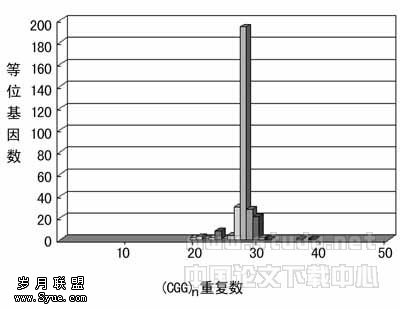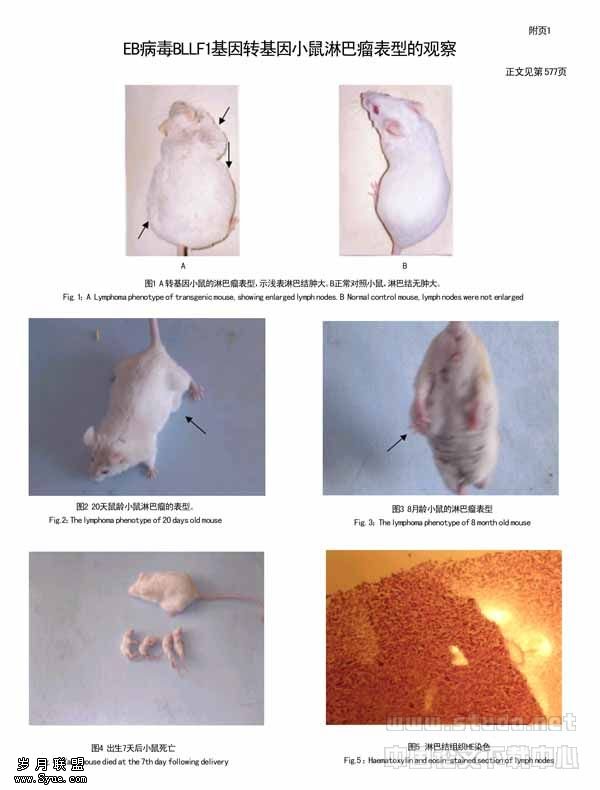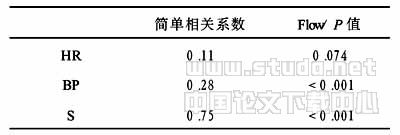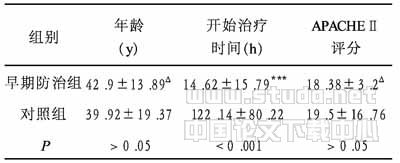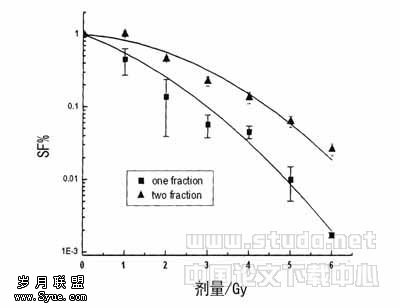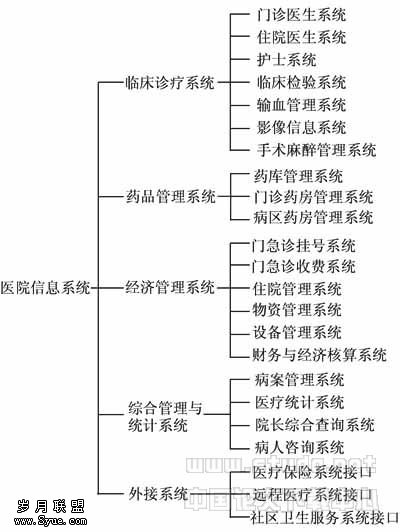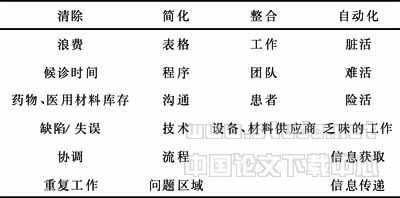膀胱癌中BLU基因启动子高甲基化和转录水平
作者:张剑英,李智,于永春,段建敏
【摘要】 目的 研究膀胱癌中BLU基因启动子甲基化状态、转录水平及其意义。方法 采用甲基化特异性PCR(methylation specific PCR, MSP)技术和逆转录PCR(RT?PCR)技术分别检测54例膀胱癌患者癌组织及45例相应癌周正常组织、3例非肿瘤患者的正常膀胱组织中BLU基因启动子甲基化状态和转录水平。结果 ①31.5%(17/54) 膀胱癌组织中BLU基因高甲基化,相应癌周正常组织和3例正常膀胱组织均未发现该基因高甲基化改变;②甲基化状态与膀胱癌临床病理参数无明显相关性;③在45例膀胱癌组织中,BLU表达缺失率为42.2%(19/45);④BLU mRNA表达缺失与肿瘤临床分期和病理分级相关(P<0.05);⑤在启动子高甲基化的膀胱癌中,92.3%(12/13)BLU mRNA表达异常下调或缺失。结论 膀胱癌中频繁发生BLU基因的高甲基化和mRNA表达缺失,其高甲基化可能是基因转录失活的重要原因。
【关键词】 膀胱癌;BLU;甲基化;转录;甲基化特异性PCR
Promoter hypermethylation and transcription level of BLU in bladder cancer
ABSTRACT: Objective To investigate the promoter methylation status and the transcription level of BLU in bladder carcinoma and their significance. Methods The methylation status of promoter and the transcription level of BLU were examined by methylation specific PCR (MSP) and RT?PCR in bladder cancer tissues from 54 patients, adjacent normal tissues from 45 cases and normal bladder tissues from 3 noncancerous patients. Results ① 31.5%(17/54) bladder cancer tissues showed BLU hypermethylation; neither the paired adjacent normal tissues nor the three normal bladder tissues showed BLU hypermethylation. ② There was no significant correlation between the methylation status and the clinical pathological parameters in bladder cancer. ③ The expression of BLU was absent in 42.2% (19/45) of bladder carcinoma from cystectomy. ④ Loss of BLU expression was associated with the stage and grade of the tumor (P<0.05). ⑤ The expression of BLU mRNA was abnormally downregulated or absent in 92.3% (12/13) of bladder carcinoma tissues with promoter hypermethylation. Conclusion BLU was found frequently hypermethylated and absent of mRNA expression in bladder carcinoma. Hypermethylation of BLU may contribute to its transcription inactivation.
KEY WORDS: bladder cancer; BLU; methylation; transcription; methylation specific PCR (MSP)
肿瘤抑制基因启动子区CpG岛的高甲基化已被确立为基因转录失活的一种重要机制[1]。膀胱癌是泌尿系统最常见的恶性肿瘤,近年来的研究发现,包括p16、E?cadherin、VHL、RASSF1A等在内的多种肿瘤抑制基因在膀胱癌中均表现出不同程度的甲基化改变[2?4]。BLU基因是新发现的一个肿瘤候选抑制基因[5],其编码蛋白含有一个DNA结合功能域——MYND功能域。该功能域同样位于AML/ETO、BS69以及suppression等蛋白内,这些蛋白分别在转录抑制、肿瘤细胞生长抑制以及细胞周期调控等方面发挥作用,研究证实完整的MYND功能域对这些蛋白功能的发挥是必须的,推测BLU分子可能具有与其他同源蛋白类似的细胞生长负调控功能,并参与了重要的转录调节途径[6]。本研究通过检测BLU基因在膀胱癌中的甲基化状态和转录水平,以期为膀胱癌甲基化谱增加一名新成员,并探讨该基因在膀胱癌发生中的作用。
1 材料与方法
1.1 研究对象 2002-2004年期间收集的45例膀胱移行细胞癌患者行膀胱切除术切除的癌组织及相应的癌周正常组织,男36例,女9例,年龄30-83岁,平均64岁;9例膀胱移行细胞癌患者经尿道切除的癌组织,男8例,女1例,年龄59岁;3例非肿瘤患者手术切除的正常膀胱组织。标本由同济大学附属第十人民、兰州大学第二附属医院和上海市第一人民医院分院泌尿外科提供。膀胱切除术切除的膀胱癌组织标本病理分级按WHO方法:Ⅰ级27例,Ⅱ级11例,Ⅲ级7例;临床分期按UICC标准:Ta-T1期31例,T2-T3期14例。经尿道切除的膀胱癌组织标本病理分级均为Ⅰ级,临床分期均属Ta-T1期。
1.2 组织DNA的抽提 采用Wizard Genomic DNA Purification Kit (Promega 公司)从组织中抽提DNA,紫外分光光度仪定量。
1.3 组织RNA的抽提 严格按照TRIzol (Invitrogen公司)试剂盒说明书提取组织总RNA,并根据A260值出RNA浓度,以A260/A280值判定其纯度,利用DnaseⅠ去除含有的痕量DNA。
1.4 DNA的亚硫酸氢盐修饰和甲基化特异性PCR(MSP) 采用基因组DNA修饰试剂盒CpGenome DNA Modification Kit(Serelogical公司),取1μg DNA按说明书操作步骤进行修饰。以修饰后DNA作为模板,分别利用甲基化和非甲基化特异性引物进行热启动PCR扩增。甲基化特异性引物为5′?TTCGTGGGTTATAGTTCGAGAAAGCG?3′(上游)和5′? AACGAATTAACCGCGCCTACGC?3′(下游);非甲基化特异性引物为5′TTTGTGGGTTATAGTTTGAGAAAGTG?3′(上游)和5′? AACAAATTAACCACACCTACAC?3′(下游)。反应条件按降落(touchdown)PCR程序进行:95℃ 12min;按94℃ 20s,72-67℃(甲基化引物)/66-61℃ (未甲基化引物)40s(每个循环退火温度依次降低1℃),72℃ 20s进行6个循环,再按94℃ 20s,66℃(甲基化引物)/60℃(未甲基化引物)30s, 72℃ 30s进行30个循环;最后72℃ 5min。扩增片段长度均为157bp。所有引物由上海生工生物工程有限公司合成。
1.5 MSP产物克隆和测序 随机挑选甲基化和未甲基化的两份MSP产物,TA克隆后进行测序,测序引物为M13通用引物,测序仪为ABI 377型测序仪。
1.6 RT?PCR 严格按照Takara One Step RNAPCR Kit (AMV)说明书进行一步法RT?PCR扩增,β?actin为内参照。引物序列及扩增条件见表1。
表1 RT?PCR引物序列及产物长度(略)
Table 1 RT?PCR primers and the length of products
F: forward primer; R: reverse primer
1.7 琼脂糖凝胶电泳 取10μL扩增产物进行20g/L琼脂糖凝胶电泳,GIS凝胶图象处理系统分析结果。
1.8 统计学分析 采用SPSS11.0统计软件包处理数据,进行χ2检验或四格表精确检验,P<0.05为差异有统计学意义。
2 结果
2.1 甲基化状态的检测结果 31.5%(17/54)膀胱癌组织中发现BLU基因异常甲基化,其中28.9%(13/45) 膀胱切除术切除的癌组织标本中发现基因甲基化(图1A),44.4%(4/9)经尿道切除癌组织标本中发现基因甲基化(图1B)。相应癌周正常组织和3例正常膀胱组织中均未发现该基因异常甲基化改变(图1A)。膀胱癌组织BLU基因甲基化与其临床病理特征的关系见表2。
图1 膀胱癌组织中BLU基因的MSP结果(略)
Fig.1 Methylation status of BLU gene in bladder cancer assayed by MSP
A: Methylation status of BLU gene in bladder cancer and adjacent normal tissues obtained by cystectomy; B: Methylation status of BLU gene in bladder tumor tissues obtained from transurethral surgeon; m: methylated; u: unmethylated; T: bladder tumor tissue; N: paired normal tissue; NB:normal bladder tissue; H2O: blank control; M: pUC Mix
表2 膀胱癌组织BLU基因甲基化与其临床病理特征的关系(略)
Table 2 Correlation between BLU gene methylation and the clinical parameters in bladder cancer
2.2 克隆测序的结果 结果显示:甲基化的MSP产物序列(图2)中,所有的胞嘧啶(C)均与鸟嘌呤(G)相连,且位于其5′端,即CpG岛中的胞嘧啶受甲基保护不发生转换;而未甲基化的MSP产物序列中的胞嘧啶(C)被胸腺嘧啶(T)所替代,表明其经亚硫酸氢盐修饰后转换为尿嘧啶(U),并在PCR过程中被扩增为胸腺嘧啶(T),证实了MSP分析CpG岛甲基化状态的准确有效性。
图2 MSP产物测序图(略)
Fig.2 Examples of sequencing chromatography of MSP products
A: sequencing chromatography of methylated products;B: sequencing chromatography of unmethylated products
2.3 mRNA表达的检测结果 经RT?PCR扩增所有组织中均可见β?actin mRNA正常表达,3例正常膀胱组织以及所有癌周正常组织中均可见BLU表达。膀胱癌组织中,BLU mRNA表达缺失率(包括表达异常下调和缺失)为42.2%(19/45)(图3)。在启动子高甲基化的膀胱癌中,92.3%(12/13)BLU mRNA表达异常下调和缺失。膀胱癌组织BLU mRNA表达与临床病理特征关系见表3。
图3 膀胱癌组织, 癌周正常组织和非肿瘤患者正常膀胱组织中BLU mRNA的表达(略)
Fig.3 mRNA expression of BLU in bladder tumor tissues, paired normal tissues and normal bladder tissues assayed by RT?PCR
T11, T25, T29: tumor tissues; N11, N25, N29: paired normal tissues; NB1: normal bladder tissues; H2O: blank control; M: pUC Mix
表3 膀胱癌组织BLU mRNA表达与其临床病理特征的关系(略)
Table 3 Correlation between BLU mRNA expression and the clinical parameters in bladder cancer
3 讨论
BLU基因最初被鉴定为一种候选的肺癌抑制基因,在肺癌细胞系中频繁发生转录下调或缺失[5]。随后,Agathanggelou[6]和Balch等[7]研究发现,BLU基因在肺癌、乳腺癌、肾癌、神经母细胞瘤、鼻咽癌和卵巢癌的癌细胞系中启动子区域高度甲基化,转录下调或缺失,且高甲基化与转录失活显著相关;该基因的外生性表达能有效抑制神经母细胞瘤和非小细胞肺癌的克隆形成,由此推测BLU基因可能是多种肿瘤的候选TSG。膀胱癌中有关BLU基因的相关研究仍未见报道,该基因在膀胱癌发生过程中的作用仍不清楚。本文在已有研究的基础上[8],采用MSP技术检测膀胱癌组织中BLU基因启动子区域CpG岛的甲基化状态,发现BLU基因在膀胱癌中发生一定频率的高甲基化改变。研究结果表明:在膀胱癌中,BLU基因启动子区域发生一定频率的高甲基化改变。其中,在膀胱切除术切除的癌组织中,基因甲基化率与肿瘤临床病理参数无显著相关性,但是有随着组织分级和病理分期升高的趋势。此外,Ⅰ级膀胱癌中基因甲基化率为22.2%(6/27),Ta-T1期肿瘤基因甲基化率为19.4%(6/31),经尿道切除的癌组织中基因甲基化率为44.4%(4/9),由此认为BLU基因启动子高甲基化可能参与了膀胱癌发生的早期阶段,但与肿瘤发展预后的相关性仍不明确。在部分癌组织中,琼脂糖电泳同时检测到甲基化和未甲基化条带,这一方面可能因为两条等位基因中存在未甲基化等位基因,另一方面可能因为肿瘤细胞中难免有正常细胞污染。此外,本研究发现膀胱癌组织中BLU基因发生一定频率的表达异常下调或缺失,92.3%(12/13)启动子高甲基化的癌组织中同时发现该基因表达异常下调或缺失,这说明在膀胱癌中BLU基因启动子高甲基化可能是引起基因失活的重要原因之一。在BLU mRNA表达水平与临床病理参数的相关性方面,发现该基因转录失活与膀胱癌组织病理分级和临床分期显著相关,推测BLU基因失活可能参与了膀胱癌的演进过程。综上所述,本研究认为BLU基因是膀胱癌甲基化谱的一员,启动子高甲基化可能是转录失活的重要原因之一,并可能参与了该类肿瘤的发生,但是甲基化与肿瘤临床病理参数的相关性以及甲基化的具体机制仍有待更深一步的研究。
【文献】
[1]Jones PA, Takai D. The role of DNA methylation in mammalian epigenetics [J]. Science, 2001, 293(5532):1068?1070.
[2]Chan MW, Chan LW, Tang NL, et al. Hypermethylation of multiple genes in tumor tissues and voided urine in urinary bladder cancer patients [J]. Clin Cancer Res, 2002, 8(2):464?470.
[3]Chung WB, Hong SH, Kim JA, et al. Hypermethylation of tumor?related genes in genitourinary cancer cell lines [J]. J Korean Med Sci, 2001, 16(6):756?761.
[4]Chan MW, Chan LW, Tang NL, et al. Frequent hypermethylation of promoter region of RASSF1A in tumor tissues and voided urine of urinary bladder cancer patients [J]. Int J Cancer, 2003, 104 (5):611?616.
[5]Lerman MI, Minna JD. The 630?kb lung cancer homozygous deletion region on human chromosome 3p21.3: identification and evaluation of the resident candidate tumor suppressor genes [J]. Cancer Res, 2000, 60(21):6116?6133.
[6]Agathanggelou A, Dallol A, Zochbauer?Muller S, et al. Epigenetic inactivation of the candidate 3p21.3 suppressor gene BLU in human cancers [J]. Oncogene, 2003, 22(10):1580?1588.
[7]Balch C, Yan P, Craft T, et al. Antimitogenic and chemosensitizing effects of the methylation inhibitor zebularine in ovarian cancer [J]. Mol Cancer Ther, 2005, 4(13):1505?1514.
[8]赵敏,李智,于永春,等. 膀胱肿瘤中错配修复基因hMLH1启动子甲基化状态的研究 [J]. 中华检验医学杂志, 2005, 28(7):736?738.


